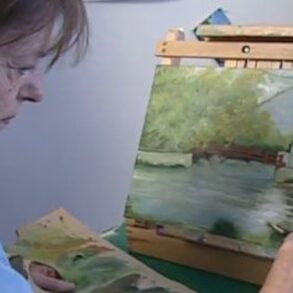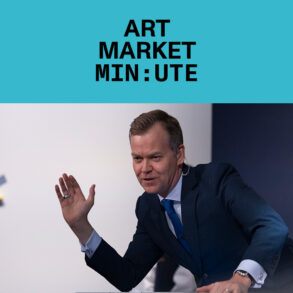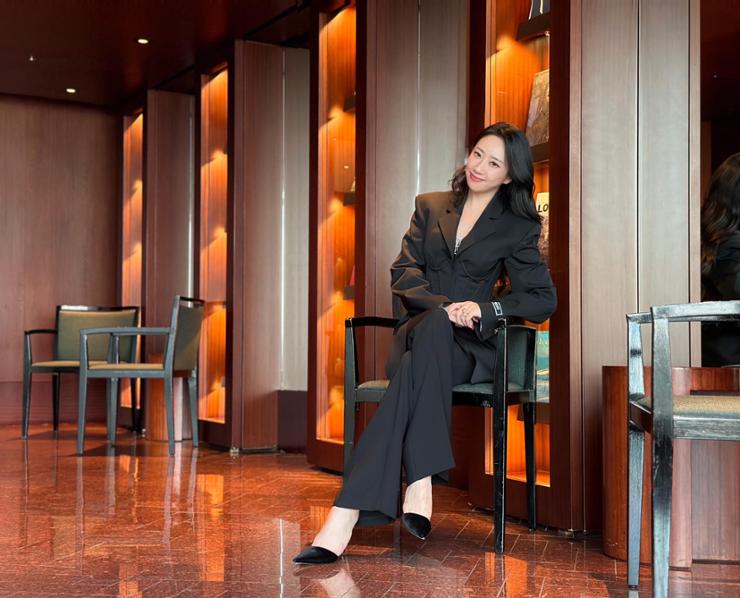
So-jung Trinity Park, director of The Trinity / Courtesy of The Trinity
In a world where art is often regarded as a luxury, So-jung Trinity Park is pioneering a new approach by using creative expression as a tool for diplomacy, business, and cultural exchange. As the director of The Trinity, Park manages a wide-ranging portfolio that includes art marketing and cultural ESG campaigns, guided by her vision of embedding art into various industries.
For her, art transcends mere aesthetics, encompassing social, cultural, and economic impact. Through each project, she showcases art’s potential as a powerful catalyst for change, bridging cultural divides and propelling industries forward in unexpected and inspiring ways.
At the heart of The Trinity’s operations is its gallery space situated at the Grand Hyatt Seoul on Mount Nam, which Park describes as a “showroom for art collecting.” This venue serves as a commercial platform designed to connect collectors with artists.
However, the gallery’s role constitutes only about 20-30 percent of The Trinity’s overall activities. Unlike traditional galleries that emphasize sales, The Trinity integrates art into broader business strategies. Park has strategically diversified The Trinity’s focus into three key areas that redefine the art business: cultural diplomacy, art hospitality, and ESG initiatives.
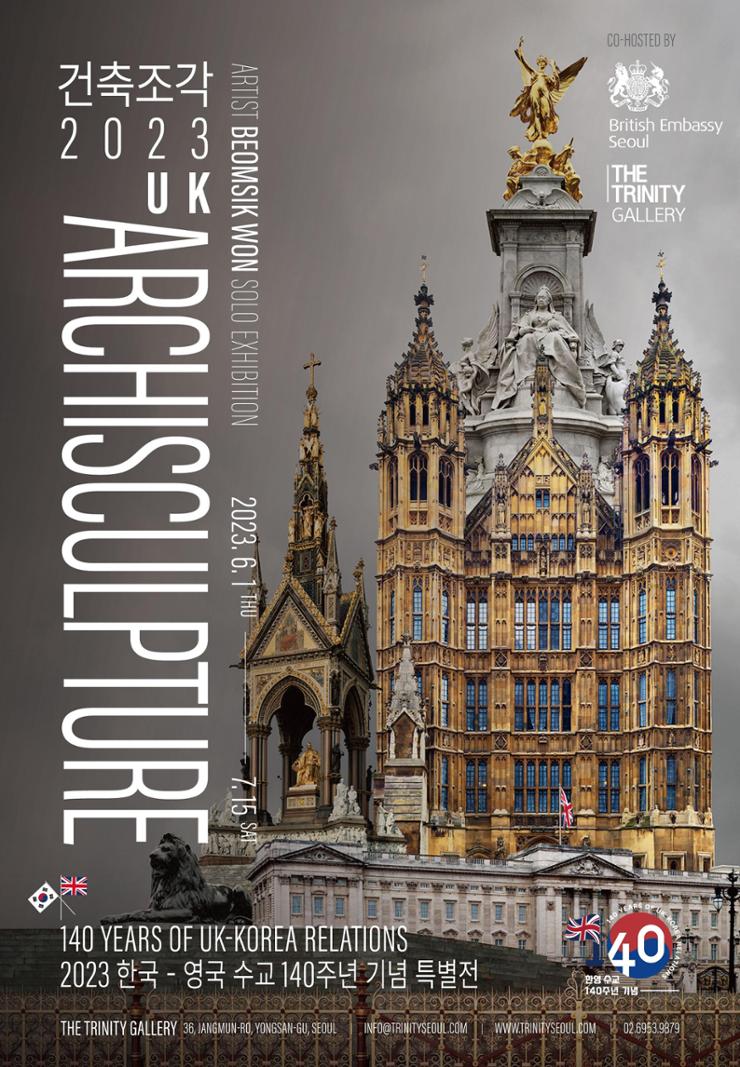
Poster for “UK Archisculpture” exhibition, commemorating the 140th anniversary of Korea-U.K. diplomatic ties / Courtesy of The Trinity
Cultural diplomacy is a key to The Trinity’s mission, using Korean art as a medium to build bridges between countries. These projects promote cultural exchange by both showcasing Korean artists in a global context and introducing international artists to Korean audiences.
“We’ve seen the global impact of Korean pop culture and now we’re ensuring K-art plays a key role in diplomatic events,” Park said during a recent interview with The Korea Times at her gallery.
These efforts were born out of the challenges posed by the COVID-19 pandemic, which disrupted cultural exchanges worldwide.
“During the pandemic, cultural communication was more necessary than ever,” Park said. “We believed that cultural diplomacy could serve as a bridge of healing and empathy, so we approached various embassies in Seoul to continue these important exchanges. Although I’m a private citizen, I saw it as my duty to sustain projects that strengthen the bonds between nations.”
In July, The Trinity joined forces with The Korea Times and the Embassy of Qatar in Korea to host an exhibition at the Sharp Gallery in southern Seoul. The show featured the work of Choi Won-seok, a photojournalist from The Korea Times, alongside Qatari photographers Yousuf Mubarak Al-Dosari and Abdulla Hamdan Al-Manna. This exhibition followed a series of successful collaborations, including Won Beom-sik’s “UK Archisculpture,” presented in partnership with the British Embassy Seoul in 2023, and Iris Perez Romero’s “The Art of Resilience,” held in collaboration with the Embassy of the Dominican Republic in 2022.

Artist Lee Lee-nam’s media installation is seen during Korea Now, a joint promotional event by Korea’s Ministry of Culture, Sports and Tourism and Korea Tourism Organization, in London in 2023. Courtesy of The Trinity
Another innovative aspect of The Trinity’s work is its art hospitality program, which redefines traditional service by integrating art into customer experience and business branding strategies.
“Art in hospitality should do more than just decorating. It should transform the space and offer new perspectives and experiences that are culturally enlightening,” Park explained.
“At The Trinity, we view hospitality as an extension of our art business … We work closely with hotels and resorts to curate art that not only decorates the space but also reflects the essence of the brand. Our goal is to create experiences that leave a lasting impression on guests, whether through a stunning art installation or a thought-provoking exhibition.”
A notable initiative is the collaboration with the Korea Tourism Organization, where The Trinity played a key role in reshaping promotional strategies for five of Korea’s major travel destinations: Busan, Andong, Gangneung, Jeonju, and Mokpo.
Instead of conventional tourism videos, The Trinity commissioned artists to interpret these cities in an artistic way. For instance, Lee Lee-nam’s project integrates various Korean landmarks into his media art, offering viewers a new perspective on traditional sights.
“We believe that artists’ interpretations of Korea’s beauty have the power to leave a profound and lasting impression,” Park said.
At the Grand Hyatt Seoul, The Trinity provides an Art Map that directs guests to various artworks throughout the property, enhancing their stay with cultural insights.
At the Mohegan Inspire Entertainment Resort in Incheon, The Trinity curated the “NEW STRUCTURE: PRISM” exhibition, featuring works by Gwon O-sang, which aligns with the resort’s identity and enhances the guest experience by integrating art directly into the resort’s environment.
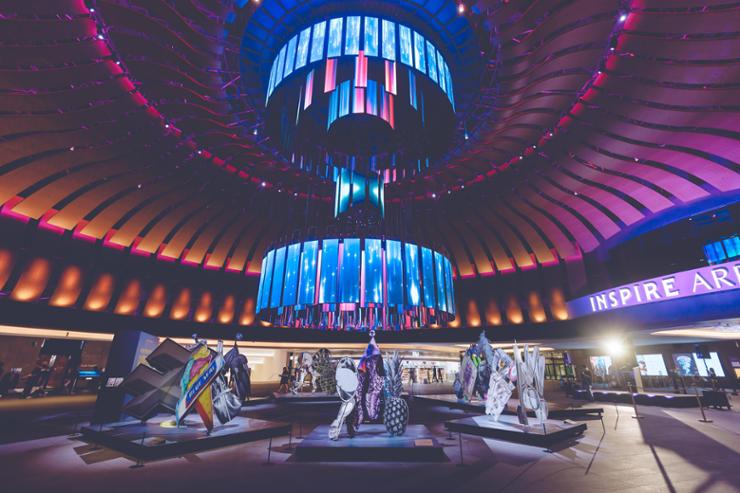
Installation view of “NEW STRUCTURE: PRISM,” featuring Gwon O-sang’s works, at Mohegan Inspire Entertainment Resort in Incheon / Courtesy of The Trinity
In recent years, environmental, social, and corporate governance (ESG) has become a key focus in the corporate world, and The Trinity has led the way in incorporating art into these initiatives. Park views art as a potent medium for corporate storytelling, adept at visually conveying a company’s values and mission.
“ESG is a frequent topic in corporate circles, yet many companies struggle with its implementation. At Trinity, we’ve long embraced the challenge of visually articulating corporate values and ideologies through the language of artists in our campaigns and this approach is garnering more attention lately,” Park said.
An example is The Trinity’s collaboration with POSCO E&C for The Sharp Gallery.
“For POSCO E&C, we curated exhibitions that not only align with their corporate values but also provide meaningful cultural experiences for the community. By showcasing Korean contemporary art, we’re helping these companies fulfill their ESG commitments while also supporting local artists.”
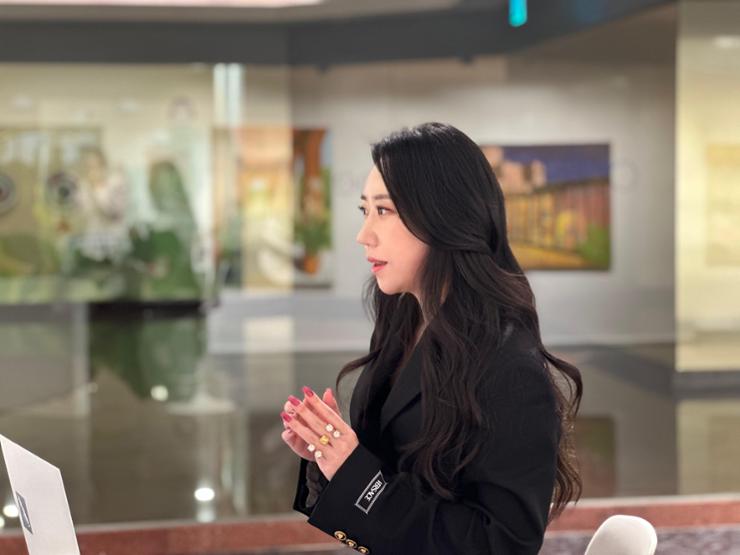
So-jung Trinity Park, director of The Trinity, speaks during an interview with The Korea Times in August. Courtesy of The Trinity
Navigating the art business in Korea comes with its own set of challenges, and Park has tackled them with a blend of innovation and perseverance. She recognizes the insular nature of the Korean art market, which can limit contemporary art’s accessibility to broader audiences. Nevertheless, Park sees these challenges as opportunities to educate the public and dismantle barriers.
“Many people still find contemporary art intimidating,” Park said. “There’s a perception that you need to study it deeply to understand it, but that’s not the case. Art is meant to be experienced and interpreted in personal ways. Through lectures and workshops, I’ve been working to demystify contemporary art, making it more approachable and enjoyable for everyone.”
Park is focused on expanding The Trinity’s reach both domestically and internationally. With the global art market increasingly turning its attention to Korean artists, Park plans to further elevate K-art on the world stage.
“Interest in Korean art is growing and we’re just at the beginning of what could be a major cultural shift,” Park said. “Our goal at The Trinity is to be at the forefront of this movement, creating opportunities for Korean artists and using art as a tool for cultural diplomacy.”





